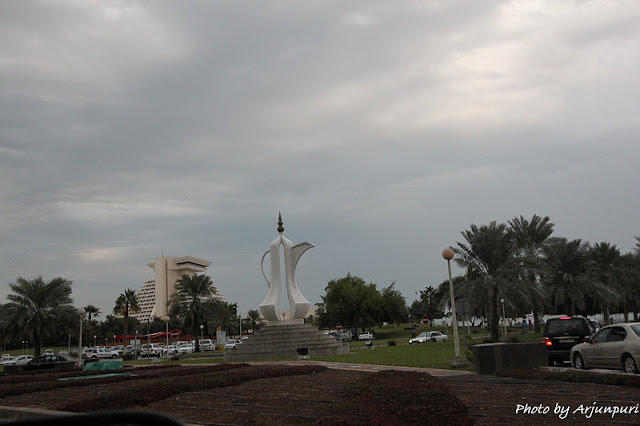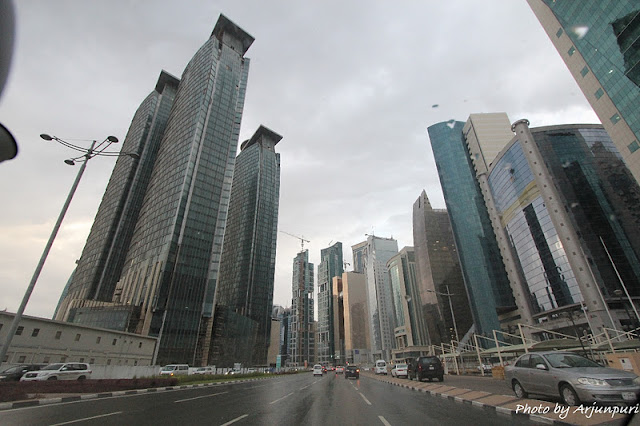Qatar has been the “fastest-growing economy” among the rapid growth markets (RGMs) in the Middle East in the last 10 years, with an average growth of 13% a year, an Ernst & Young report shows.
According to the report, Qatar had the highest nominal GDP in terms of dollar per capita (at purchasing power parity) in 2010 among the 25 RGMs, followed by the UAE. Egypt’s average growth was at 4.9%, the UAE at 4.3% and Saudi Arabia at almost 3.2%.
Altogether, the 25 RGMs have grown on average by 5.8% per year over the last decade, more than three times as fast as the advanced economies combined and this rapid pace of expansion is set to continue, with growth in RGMs outpacing the advanced economies by more than 3.5% per annum over the next decade.
The forecast shows average GDP growth in the RGMs edging just under 6% in 2012, with the American and Asian countries seeing the most marked slowing in growth.
The outlook in the Middle East, however, is “more positive” with resource-rich countries such as Qatar, Saudi Arabia and the UAE benefiting from high oil prices.
The dynamics of the global economy have changed with a new set of fast-growing markets challenging the position of the established advanced economies, Ernst & Young said in its new quarterly Rapid Growth Markets Forecast (RGMF). The rapid growth markets are expected to grow collectively by 6.2% this year, almost four times more than the anaemic growth expected in the eurozone.
The forecast, co-produced with Oxford Economics, is “well placed” to offer insight on macroeconomic trends across 25 RGMs which have been selected based on the size of the economy and population, strategic importance for business and proven strong growth and future potential.
The 25 RGMs will account for 38% of world consumer spending and 55% of world fixed capital investment, according to the forecast. By 2020, rapid growth markets will account for 50% of global GDP when measured at purchasing power parity (PPP).
Bassam Hage, Ernst & Young Mena markets leader, said: “Rapid growth markets are becoming increasingly important in terms of both their overall weight in the world economy and their global influence. While the advanced economies struggle with weak growth, RGMs seem well-placed to better weather the economic storm.”
“With the exception of Egypt’s slow recovering economy which is being weighed down by local developments, Qatar, Saudi Arabia and the UAE are expected to see continued strong growth in the future. Economic activity across the region has slowed in the past few years reflecting reduced economic confidence and greater caution. However, GCC government spending in areas such as infrastructure, healthcare and social policy is expected to drive further growth.”
Foreign Direct Investment (FDI) inflows to all RGMs have risen from $205bn in 2000 to $444bn in 2010, and they now receive around 50% of global FDI inflows.
Qatar, the UAE and Saudi Arabia were among the top five RGMs in terms of FDI inflows per capita in 2010. But FDI is no longer a one-way street — RGMs are themselves increasingly becoming major international investors in advanced economies, as their leading companies buy up international competitors.
Alexis Karklins-Marchay, co-leader (Emerging Markets Center) at Ernst & Young, comments: “While the RGMs are far from decoupled from global economic risks, they are well positioned to deal with these challenges. In the case of a disorderly eurozone debt crisis that leads to a prolonged recession in the eurozone and a stagnation of growth in the US in 2012-13, RGM GDP growth could be cut to 3.2% in 2013, much lower than the 6.8% expected but still the envy of advanced economies.
“With fewer financial overhangs from the recent financial crisis, we would expect to see a reversal of the recent monetary policy tightening implemented in many countries. And, indeed, many could also raise government spending and cut taxes to support demand.”
According to the report, Qatar had the highest nominal GDP in terms of dollar per capita (at purchasing power parity) in 2010 among the 25 RGMs, followed by the UAE. Egypt’s average growth was at 4.9%, the UAE at 4.3% and Saudi Arabia at almost 3.2%.
Altogether, the 25 RGMs have grown on average by 5.8% per year over the last decade, more than three times as fast as the advanced economies combined and this rapid pace of expansion is set to continue, with growth in RGMs outpacing the advanced economies by more than 3.5% per annum over the next decade.
The forecast shows average GDP growth in the RGMs edging just under 6% in 2012, with the American and Asian countries seeing the most marked slowing in growth.
The outlook in the Middle East, however, is “more positive” with resource-rich countries such as Qatar, Saudi Arabia and the UAE benefiting from high oil prices.
The dynamics of the global economy have changed with a new set of fast-growing markets challenging the position of the established advanced economies, Ernst & Young said in its new quarterly Rapid Growth Markets Forecast (RGMF). The rapid growth markets are expected to grow collectively by 6.2% this year, almost four times more than the anaemic growth expected in the eurozone.
The forecast, co-produced with Oxford Economics, is “well placed” to offer insight on macroeconomic trends across 25 RGMs which have been selected based on the size of the economy and population, strategic importance for business and proven strong growth and future potential.
The 25 RGMs will account for 38% of world consumer spending and 55% of world fixed capital investment, according to the forecast. By 2020, rapid growth markets will account for 50% of global GDP when measured at purchasing power parity (PPP).
Bassam Hage, Ernst & Young Mena markets leader, said: “Rapid growth markets are becoming increasingly important in terms of both their overall weight in the world economy and their global influence. While the advanced economies struggle with weak growth, RGMs seem well-placed to better weather the economic storm.”
“With the exception of Egypt’s slow recovering economy which is being weighed down by local developments, Qatar, Saudi Arabia and the UAE are expected to see continued strong growth in the future. Economic activity across the region has slowed in the past few years reflecting reduced economic confidence and greater caution. However, GCC government spending in areas such as infrastructure, healthcare and social policy is expected to drive further growth.”
Foreign Direct Investment (FDI) inflows to all RGMs have risen from $205bn in 2000 to $444bn in 2010, and they now receive around 50% of global FDI inflows.
Qatar, the UAE and Saudi Arabia were among the top five RGMs in terms of FDI inflows per capita in 2010. But FDI is no longer a one-way street — RGMs are themselves increasingly becoming major international investors in advanced economies, as their leading companies buy up international competitors.
Alexis Karklins-Marchay, co-leader (Emerging Markets Center) at Ernst & Young, comments: “While the RGMs are far from decoupled from global economic risks, they are well positioned to deal with these challenges. In the case of a disorderly eurozone debt crisis that leads to a prolonged recession in the eurozone and a stagnation of growth in the US in 2012-13, RGM GDP growth could be cut to 3.2% in 2013, much lower than the 6.8% expected but still the envy of advanced economies.
“With fewer financial overhangs from the recent financial crisis, we would expect to see a reversal of the recent monetary policy tightening implemented in many countries. And, indeed, many could also raise government spending and cut taxes to support demand.”

























































